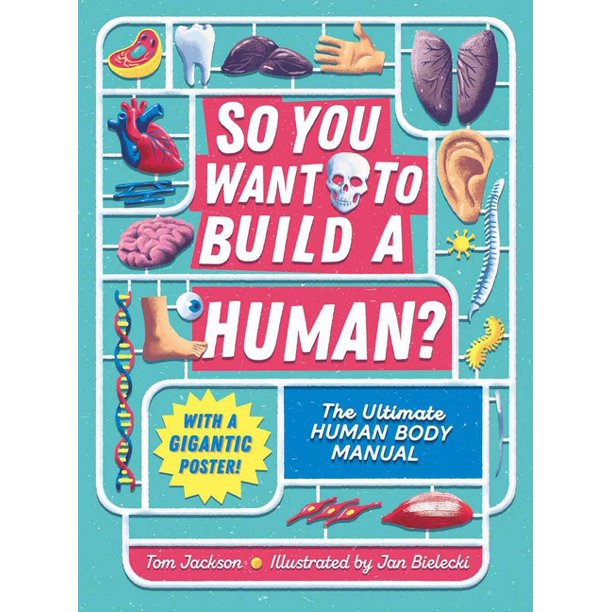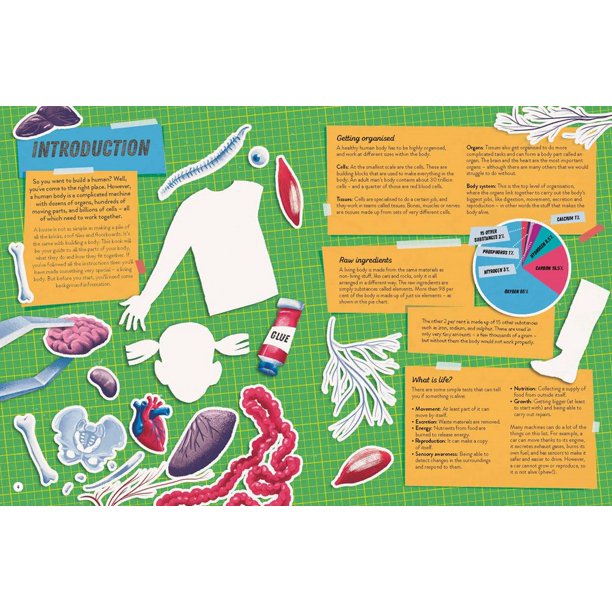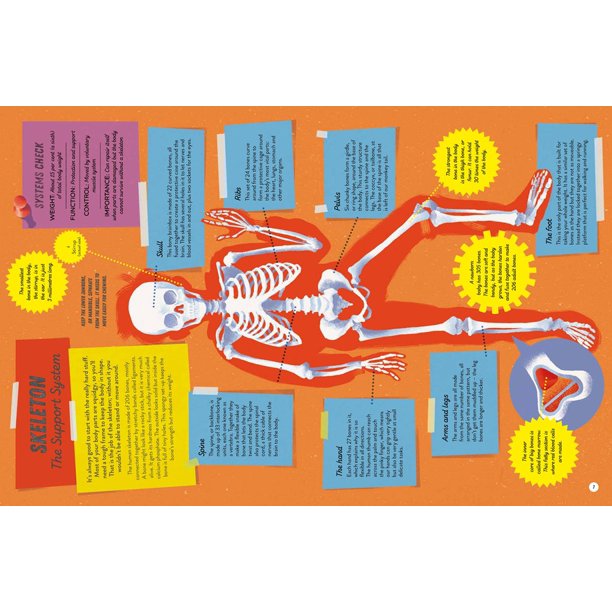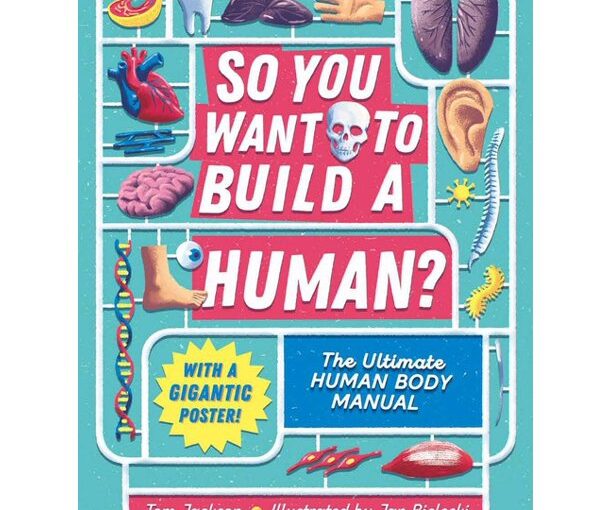Having spent a lot of time in elementary school libraries and taught hundreds of children that age I know that they do not mind reading non-fiction books. Granted most of them might reach for graphic novels or illustrated books initially, and they might scream or holler when presented with non-fiction, but that’s all for show. Once they dive into those truth-ridden books they’ll be happy, swim in knowledge, and regurgitate facts back to you with glee. So You Want to Build A Human? is one of those non-fiction, illustrated books. It’s an oversized, vividly illustrated look that looks at the major components and systems that make up you and me.

What’s more, and why books like these speak so well to second graders and up, is the fact that they are fun to read. Moreover, it’s on par for most third-grade readers to dive into on their own. This is accomplished due to the reading level and the fact that the pages are highly segmented, with bite-sized content for those ages to chew on. The book’s layout is also varied, with some pages displaying information in a landscape format, while others require readers to turn the book so that they can read the book’s vertical pages.

The two pages that cover the skeleton are like that. They show a skeleton, with the shape of a boy sketched out around the bones. Around the bones, and sometimes with dots pointing out specific regions, are different colored blurbs with text about all things boney. There’s a small sunburst block with two sentences about bone marrow and their production area for red blood cells. There are also slightly longer blocks about the ribs, spine, hand, skull, pelvis, foot, as well as arms and legs. Readers will enjoy the fact that there are a couple of blocks that just list random facts about the subject. For example, newborn babies have 305 bones, but they fuse together over time to where adults have 205 bones.

Every page in So You Want to Build A Human? is brightly colored and does a great job of bringing readers in. The more minute organs, such as your ears are shown in perspective, which allows readers an ‘a ha’ moment when they realize just how small, delicate, and precise that thing is.
The reason that our 10YO likes the book is that it presents him with an answer as to where something is and what exactly it does. It also doesn’t smother them with information. Readers are provided with a succinct overview of something that will provide them with the five W’s of key facts. Some kids might be motivated to find a more thorough dig into the human body and become a doctor. But, that’s unlikely and you know it. What most parents and educators want is for kids to willingly engage in a non-fiction book that takes learning out of the box and places it firmly into fun. This is fun.
Perhaps the best example I could provide are those Nat Geo Kids books. They could make a book that just looked at metal folding chairs, but done in the same snappy way that they make their content, it would appeal to kids. So You Want to Build A Human? is not a Nat Geo book. However, it jumps into that same vein in the manner that kids will want to see this book. They’ll be surprised that they can read it. Then they’ll be surprised that they’re enjoying it.
So You Want To Build A Human? The Ultimate Human Body Manual is by Tom Jackson with illustrations by Jan Bielecki and is available on Wellbeck Children’s Publishing.
There are affiliate links in this post.





 Facebook
Facebook Twitter
Twitter Flickr
Flickr GooglePlus
GooglePlus Youtube
Youtube